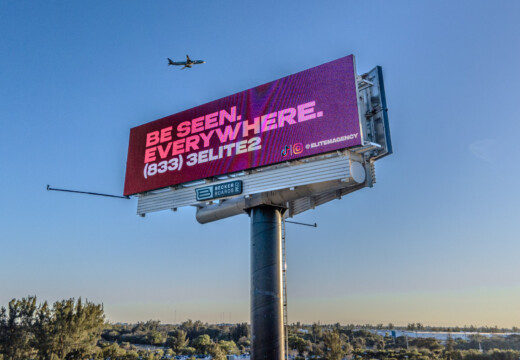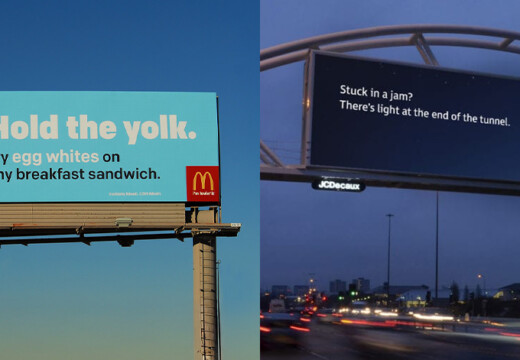Want to know if your digital billboard campaign is working? Here’s how to measure its impact on your brand:
- What is Brand Lift? It’s the improvement in consumer awareness, perception, and engagement after seeing your ad. For digital billboards, this includes brand recognition, recall, and actions like website visits or store traffic.
- Why Measure Brand Lift? To assess ROI, refine your ad messaging, pick better billboard locations, and optimize timing for maximum visibility.
- How to Track it:
- Use surveys to measure ad recall and brand perception.
- Analyze location-based data for foot traffic and store visits.
- Set up QR codes and tracking pixels to monitor website visits and conversions.
- Compare test and control groups to isolate the campaign’s true impact.
Key Metrics to Watch:
- Brand recognition (via surveys)
- Website traffic from billboard areas
- Social media mentions
- Store visits and sales near billboard locations
Setting Goals and Baseline Measurements
Setting Clear Campaign Goals
When measuring brand lift, it’s crucial to set clear, measurable objectives that go beyond just increasing visibility. Your goals should align with the outcomes you’re targeting for your campaign.
Key Metrics to Consider:
- Brand recognition growth (tracked through surveys)
- Website traffic increases from areas where billboards are displayed
- Social media mentions related to your campaign
- In-person store visits or location-based searches
- Improved purchase intent
"Billboards are one of the most impactful ways to advertise, and with Blip, you spend a fraction of what you would end up paying elsewhere".
Once your goals are defined, collect baseline data to measure your progress effectively.
Collecting Baseline Data
Before launching your campaign, gather pre-launch data to create a snapshot of your starting point. This will help you track how much your campaign moves the needle.
Important Pre-Campaign Data:
- Current brand awareness levels
- Website traffic from targeted geographic areas
- Frequency of store visits
- Social media engagement rates
- Sales figures near planned billboard locations
With this data, you’ll have a solid foundation to measure your campaign’s success.
Choosing Performance Metrics
"It’s not a social media thing that you see on your phone. It’s not word-of-mouth. It’s big and bold and out there in public. I would say this is the first step of looking big and public".
Here’s a breakdown of key performance metrics and how to measure them:
| Metric Category | Key Performance Indicators | Measurement Method |
|---|---|---|
| Awareness | Brand Recognition Rate | Pre/Post Surveys |
| Engagement | Website Traffic Growth | Geographic Analytics |
| Action | Store Visit Increase | Location Tracking |
| Sentiment | Brand Perception Change | Customer Feedback |
When selecting metrics, aim for a mix of short-term indicators (like website traffic) and long-term measures (like brand perception). As noted by Pretty In Pinkston:
"Blip works for us. It’s a different medium, and it brings a lot of exposure. It sets us apart from the rest of the [competition], and that’s what I like."
Tailor your measurement strategy to focus on metrics that match your business goals, while keeping expectations grounded in the realities of your campaign.
Brand Lift Measurement Methods
Ad Recall Surveys
Start with ad recall surveys to evaluate how well your campaign resonates. Conduct these surveys 24–48 hours after exposure to capture fresh recall while it’s still top of mind.
Here are some tips for designing effective survey questions:
- Begin with general awareness questions.
- Incorporate visuals from your billboard design.
- Ask about specific campaign messages.
- Assess changes in purchase intent.
A 2024 case study by Blip revealed that including billboard visuals in surveys improved recall accuracy by 32%. Blip’s integrated survey tools make this process easier by automatically linking impression data with survey responses.
Next, analyze your campaign’s on-the-ground influence with location data.
Location-Based Brand Analysis
Location analytics help you measure how your campaign impacts real-world behavior by combining multiple data points.
Key Metrics to Track:
- Foot traffic within a 1-mile radius of your billboards.
- Average time spent in targeted locations.
- Sales data cross-referenced with campaign periods.
- Mobile tracking data to monitor movement patterns.
Blip’s marketplace analytics allow advertisers to link ad plays with location metrics. For example, in early 2024, a regional coffee chain reported an 18% rise in store visits during their digital billboard campaign.
To further validate your results, use controlled testing methods.
Test vs. Control Groups
Using test and control groups helps isolate the actual effects of your billboard ads. By comparing exposed and unexposed groups, you can pinpoint the campaign’s impact.
| Group Type | Setup Method | Measurement Focus |
|---|---|---|
| Test Group | Billboard exposure | Brand awareness, recall rates |
| Control Group | No billboard exposure | Baseline metrics |
| Split Test | Alternating ad creatives | Design effectiveness |
For reliable results, follow these guidelines: run your test for 4–6 weeks, gather at least 400 responses per demographic group, and ensure geographic separation between groups.
"A Nielsen study found test/control setups improve lift accuracy by 41% compared to single-group methods".
Blip’s analytics dashboard and API integrations simplify the process by automatically tracking these metrics.
Setting Up Tracking Systems
QR Code and Pixel Setup
Dynamic QR codes on digital billboards need careful planning to ensure they work effectively. These codes should measure at least 24×24 inches and include 30% error correction, making them readable even from highways.
To track performance effectively:
- Configure dynamic QR codes to log scan locations and timestamps.
- Design mobile-friendly landing pages with UTM parameters for campaign tracking.
- Place tracking pixels prominently above-the-fold.
- Use asynchronous loading to maintain fast page speeds.
Blip’s dashboard simplifies the process by generating campaign-specific QR codes and tracking pixels, achieving a strong 92% capture rate for conversions driven by billboards. Paired with mobile tracking, this approach provides robust campaign attribution.
Mobile ID Tracking
Set up a tracking zone within 500–800 feet of each billboard to collect Mobile Advertising IDs (MAIDs) using background location data.
Blip’s system uses probabilistic matching to link these IDs to store visits (via GPS), website conversions, app activity, and purchase behavior. Privacy is a priority, with double-blind encryption minimizing personal data risks to less than 0.1%. Attribution windows last up to 7 days after exposure, with average match rates of 63% for Android and 58% for iOS devices. For a more comprehensive view, combine these techniques with strategies for tracking long-term effects.
Long-term Impact Measurement
In addition to immediate tracking, long-term analysis helps assess how campaigns continue to influence brand performance. Blip’s Brand Lift solution uses quarterly surveys to measure ongoing shifts in brand sentiment.
Here’s a breakdown of tracking methods and their average results:
| Timeframe | Measurement Method | Average Impact |
|---|---|---|
| 90 Days | Location Attribution | 28% increase in store visits |
| 120 Days | Cookie-based Retargeting | 17% growth in branded search |
| 180 Days | Brand Awareness Surveys | 14% sustained brand awareness |
To enhance long-term tracking, integrate billboard campaign data with tools like customer relationship management (CRM) systems, point-of-sale (POS) data, online conversion metrics, and social media analytics. Adjust tracking parameters for seasonal trends and market conditions, allowing Blip’s analytics tools to normalize data and deliver clear insights into brand performance over time.
sbb-itb-2e2e93f
Data Analysis and Campaign Improvement
Statistical Analysis
Use statistical tests to evaluate campaign data and confirm key performance metrics like confidence intervals, sample sizes, and attribution windows. Blip’s analytics dashboard adjusts data to account for seasonal trends and market shifts, providing a reliable baseline. This ensures a solid framework for assessing creative performance and managing budgets effectively.
Ad Design Performance
Strong creative design can boost brand visibility. Clear, bold visuals paired with straightforward messaging improve ad recall and reinforce brand identity. Testing multiple design options while keeping branding consistent helps pinpoint which visuals drive the most awareness and engagement.
Budget Optimization
Smart budget management ensures campaigns deliver maximum results. Regularly review campaign data, shift spending as needed, and allocate more funds to top-performing locations. Experiment with timing strategies, such as focusing on high-traffic periods, to increase exposure while controlling costs throughout the campaign.
Conclusion: Measuring Brand Lift Success
Key Steps to Take
Start by defining your campaign goals and establishing baseline metrics. Use tools like QR codes, mobile tracking, and location data to gather measurable insights on brand lift. Statistical analysis can then pinpoint which creative elements and billboard placements are driving the most brand awareness.
Moving Forward with Digital Billboards
Try launching a test campaign on Blip’s platform. With budgets starting as low as $20 per day, you can track performance in real time using their analytics dashboard. This constant feedback is key to achieving a strong ROI and boosting brand recognition.
"Billboards are one of the most impactful ways to advertise, and with Blip, you spend a fraction of what you would end up paying elsewhere".
To get the most from your campaign, consider these steps:
- Pick High-Visibility Locations: Focus on areas with strong visibility and a target audience that aligns with your brand.
- Track Metrics Closely: Use analytics to monitor performance and tweak your creatives and scheduling as needed.
- Refine Your Strategy: Use the data to continually improve your campaign’s effectiveness.
Digital billboards give you the ability to adjust and improve your approach as you go. Kimberly Pinkson, Owner of Pretty In Pinkston, sums it up well:
"Blip works for us. It’s a different medium, and it brings a lot of exposure. It sets us apart from the rest of the [competition], and that’s what I like".
How to Measure the Success of Your Outdoor Advertising Campaign? Vital KPIs
FAQs
How can I use surveys to measure the impact of my digital billboard campaign on brand awareness?
Surveys are a powerful tool for measuring brand lift from your digital billboard campaigns. To get started, design surveys that assess key metrics like brand awareness, recall, perception, and intent to purchase. Distribute these surveys to a target audience both before and after your campaign to compare results and identify any shifts in sentiment or awareness.
For the most accurate insights, ensure your surveys are concise and include questions tailored to your campaign goals. You can also use tools like online survey platforms or in-person interviews to gather responses. By analyzing the data, you’ll gain a clearer understanding of how your digital billboard efforts influence audience perception and overall brand impact.
How can I use QR codes and tracking pixels to measure conversions from digital billboard campaigns?
To measure conversions from digital billboard campaigns, you can use QR codes and tracking pixels strategically. Place QR codes on your billboard designs to encourage viewers to scan and visit a specific landing page or promotional offer. Ensure the QR code is large enough to be easily scanned and leads to a page optimized for mobile users. Tracking the scans will give you insights into user engagement.
For tracking pixels, integrate them into your landing pages or websites linked to your campaign. Pixels help monitor user actions, such as form submissions, purchases, or other key conversions. These tools, combined with analytics platforms, allow you to evaluate the effectiveness of your billboard ads and refine your marketing strategy for better results.
How can I measure the impact of my digital billboard campaign separately from other marketing efforts using test and control groups?
To isolate the impact of your digital billboard campaign, you can use test and control groups. Start by selecting two similar audience segments: one that will be exposed to your billboard ads (test group) and another that will not (control group). Ensure both groups share similar demographics, behaviors, and geographic characteristics for accurate comparisons.
Next, monitor key metrics such as brand awareness, website traffic, or sales in both groups. Any significant differences in performance between the test and control groups can help you attribute those results to your digital billboard campaign. Tools like surveys or analytics platforms can assist in gathering and analyzing this data effectively. This method ensures you clearly understand how your billboard ads contribute to your overall marketing success.
Surveys are a powerful tool for measuring brand lift from your digital billboard campaigns. To get started, design surveys that assess key metrics like brand awareness, recall, perception, and intent to purchase. Distribute these surveys to a target audience both before and after your campaign to compare results and identify any shifts in sentiment or awareness.
\n
For the most accurate insights, ensure your surveys are concise and include questions tailored to your campaign goals. You can also use tools like online survey platforms or in-person interviews to gather responses. By analyzing the data, you’ll gain a clearer understanding of how your digital billboard efforts influence audience perception and overall brand impact.
"}},{"@type":"Question","name":"How can I use QR codes and tracking pixels to measure conversions from digital billboard campaigns?","acceptedAnswer":{"@type":"Answer","text":"
To measure conversions from digital billboard campaigns, you can use QR codes and tracking pixels strategically. Place QR codes on your billboard designs to encourage viewers to scan and visit a specific landing page or promotional offer. Ensure the QR code is large enough to be easily scanned and leads to a page optimized for mobile users. Tracking the scans will give you insights into user engagement.
\n
For tracking pixels, integrate them into your landing pages or websites linked to your campaign. Pixels help monitor user actions, such as form submissions, purchases, or other key conversions. These tools, combined with analytics platforms, allow you to evaluate the effectiveness of your billboard ads and refine your marketing strategy for better results.
"}},{"@type":"Question","name":"How can I measure the impact of my digital billboard campaign separately from other marketing efforts using test and control groups?","acceptedAnswer":{"@type":"Answer","text":"
To isolate the impact of your digital billboard campaign, you can use test and control groups. Start by selecting two similar audience segments: one that will be exposed to your billboard ads (test group) and another that will not (control group). Ensure both groups share similar demographics, behaviors, and geographic characteristics for accurate comparisons.
\n
Next, monitor key metrics such as brand awareness, website traffic, or sales in both groups. Any significant differences in performance between the test and control groups can help you attribute those results to your digital billboard campaign. Tools like surveys or analytics platforms can assist in gathering and analyzing this data effectively. This method ensures you clearly understand how your billboard ads contribute to your overall marketing success.
"}}]}


